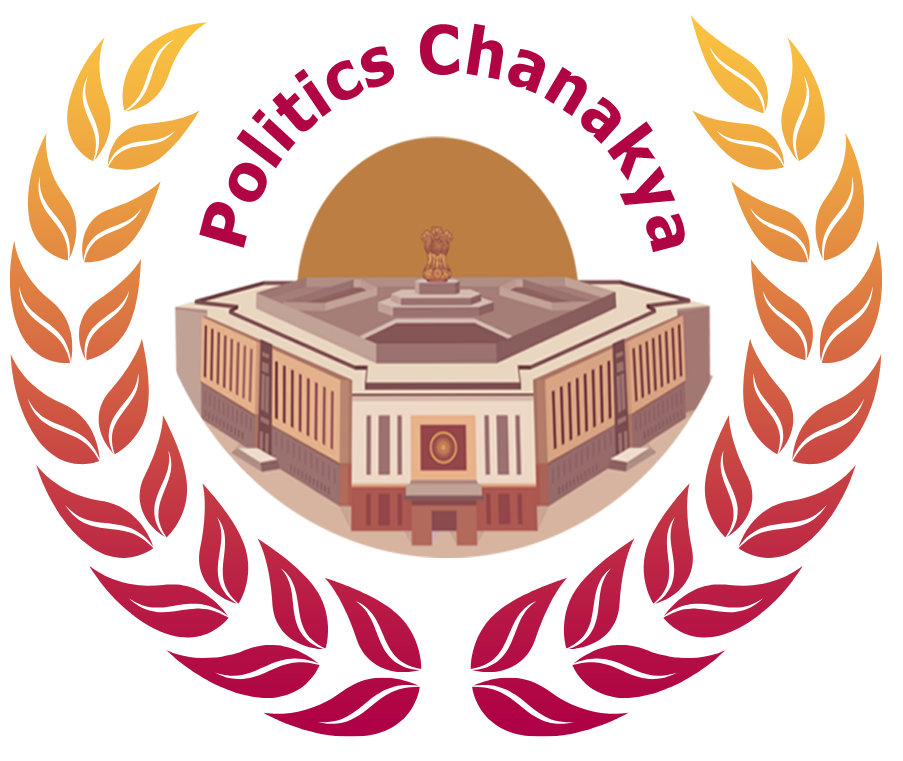Mobile and In-App
- Introduction
- Understanding Mobile and In-App Advertising
- Developing a Mobile Advertising Strategy
- Choosing the Right Platforms
- Creating Engaging Ad Content
- Leveraging Location-Based Advertising
- Integrating with Social Media
- Compliance and Ethical Considerations
- Budgeting and ROI
- Using Analytics for Campaign Optimization
- Interactive and Immersive Ad Experiences
- The Role of Artificial Intelligence
- Responding to Feedback and Engagement
- Future Trends in Mobile Advertising for Politics
- Conclusion

Introduction
The Rise of Mobile and In-App Advertising in Indian Politics: With the increasing penetration of smartphones and mobile applications in India, political campaigns have turned to mobile and in-app advertising as essential tools for reaching and engaging voters. This shift signifies a recognition of the growing importance of digital mediums in influencing public opinion and voter behavior.
Overview of Politics Chanakya’s Expertise: Drawing inspiration from the ancient Indian strategist, Politics Chanakya, modern political campaigns can benefit from a similar level of strategic thinking and adaptability. In the context of mobile and in-app advertising, this involves understanding the digital landscape, identifying key voter segments, and using data-driven strategies to reach and influence these groups effectively.
Understanding Mobile and In-App Advertising
Definition and Importance: Mobile and in-app advertising refers to the placement of ads within mobile applications and platforms. This type of advertising is crucial due to its ability to reach users directly on their personal devices, often with high engagement levels. It’s particularly important in a country like India, where a large proportion of the population accesses the internet primarily through smartphones.
The Reach and Impact in Indian Politics: The reach of mobile and in-app advertising in Indian politics is vast, allowing campaigns to connect with a diverse and geographically dispersed electorate. Its impact is significant, especially among younger and more tech-savvy voters, offering a dynamic way to present political messages, gather feedback, and mobilize support.
Developing a Mobile Advertising Strategy
Identifying Target Audiences: The first step in creating a mobile advertising strategy is to identify the target audience segments. This involves understanding the demographics, interests, and digital behaviors of different voter groups. Factors like age, location, language preference, and app usage patterns are crucial in segmenting the audience for targeted advertising.
Crafting Tailored Messages: Once the target audiences are identified, the next step is to craft messages that resonate with these groups. This means creating content that speaks to the specific concerns, aspirations, and values of each segment. Tailored messaging in mobile and in-app advertising might include personalized text, engaging visuals, and interactive elements designed to appeal to the identified demographics.
Choosing the Right Platforms
Popular Apps and Mobile Platforms in India: In India, a variety of mobile applications and platforms are popular among different demographic groups. Social media apps like Facebook, WhatsApp, and Instagram, messaging apps like Telegram, and news and entertainment apps are widely used. Additionally, regional or language-specific apps can be crucial for reaching certain segments of the population.
Deciding on Platforms Based on Audience: The choice of platform should be driven by the target audience’s preferences. For example, younger voters might be more active on platforms like Instagram and Snapchat, while older demographics might be reached more effectively through Facebook or news apps. The selection of platforms should align with where the identified target audiences are most active and engaged.
Creating Engaging Ad Content
Types of Mobile Ads: Mobile advertising can take various forms, such as:
Banner Ads: Small ads typically displayed at the top or bottom of the screen. They need to be visually appealing and concise to capture attention.
Interstitial Ads: Full-screen ads that appear at transition points in an app. They are more immersive and can include rich media.
Video Ads: These are increasingly popular and can be highly engaging when they are short and convey a clear message.
Cultural and Linguistic Considerations: In a culturally and linguistically diverse country like India, ads must be tailored to reflect the cultural nuances and language preferences of different regions. This may involve creating ads in multiple languages or incorporating cultural themes to resonate with specific communities.
Leveraging Location-Based Advertising
Geo-Targeting for Political Campaigns: Location-based advertising, or geo-targeting, is highly effective for political campaigns. It allows campaigns to target ads to users in specific geographic areas, which can be as broad as a state or as narrow as a specific locality. This is particularly useful in addressing local issues or mobilizing support in targeted regions.
Case Studies of Effective Use: There have been successful instances where political campaigns have used geo-targeting to drive significant impact. For example, a campaign might target voters in a particular constituency with messages specific to local issues or events, or use geo-targeted ads to increase turnout at local rallies or meetings.
Integrating with Social Media
Cross-Promotion Strategies: Effective integration of mobile advertising with social media involves cross-promotion strategies. This could mean using social media platforms to drive traffic to mobile apps or vice versa. For example, a political campaign might use social media posts to encourage app downloads or use apps to boost engagement on their social media pages.
Coordinated Campaigns Across Platforms: Coordinating campaigns across mobile apps and social media ensures consistency in messaging and maximizes reach. This coordinated approach can help in creating a seamless experience for the audience, whether they’re engaging with the campaign on a mobile app, Facebook, Twitter, or Instagram.
Compliance and Ethical Considerations
Adhering to Indian Digital Advertising Laws: Political campaigns must comply with India’s laws governing digital advertising. This includes regulations regarding the transparency of sponsorship, limits on spending, and adherence to guidelines set by bodies like the Election Commission of India. Staying updated with these regulations and ensuring compliance is essential to avoid legal complications.
Ethical Practices in Political Advertising: Beyond legal compliance, ethical considerations are paramount. This involves being truthful in advertising content, respecting privacy, avoiding manipulation or misinformation, and ensuring that all advertising is respectful and not divisive or harmful.
Budgeting and ROI
Effective Budget Allocation: Allocating the advertising budget effectively is crucial for campaign success. This involves determining the platforms and types of ads that are most effective for reaching the target audience and allocating resources accordingly. The budget should be flexible enough to allow for adjustments based on the campaign’s ongoing performance.
Tracking and Measuring ROI: Measuring the return on investment (ROI) is key to understanding the effectiveness of mobile and in-app advertising campaigns. Metrics to consider include engagement rates, conversion rates (such as app downloads, subscriptions, or actions taken), and the overall impact on voter sentiment and support. Using analytics tools to track these metrics helps in making informed decisions about future advertising strategies.
Using Analytics for Campaign Optimization
Tools for Tracking Performance: A variety of analytics tools are available to track the performance of mobile and in-app advertising campaigns. These tools can provide valuable insights into metrics like click-through rates, engagement levels, app downloads, and user demographics. Google Analytics, Facebook Insights, and specialized mobile analytics platforms are commonly used for this purpose.
Adapting Strategies Based on Data: The data gathered from analytics tools should be used to adapt and refine campaign strategies. This can involve tweaking ad content, adjusting targeting parameters, or reallocating budget to the most effective channels. The goal is to continuously improve campaign performance based on empirical evidence.
Interactive and Immersive Ad Experiences
Augmented Reality (AR) and Virtual Reality (VR) in Ads: AR and VR technologies offer new frontiers for creating engaging and immersive ad experiences. In the context of political advertising, these technologies can be used to create interactive campaign materials, such as virtual rallies, immersive policy simulations, or AR experiences that bring campaign messages to life in the user’s environment.
Creating Memorable Campaigns: The use of AR and VR can help political campaigns stand out and create more memorable and impactful experiences for voters. This innovative approach can not only attract more attention but also foster a deeper connection with the campaign’s message.
The Role of Artificial Intelligence
AI in Targeting and Ad Optimization: AI is increasingly playing a significant role in enhancing the targeting and optimization of political ads. By analyzing large datasets, AI algorithms can identify patterns and trends in user behavior, enabling more precise targeting of ads. AI can also optimize ad performance in real-time by adjusting variables such as bidding strategies, ad placement, and content.
Predictive Analytics for Voter Behavior: AI-driven predictive analytics can be instrumental in understanding and anticipating voter behavior. By analyzing data from various sources, AI can help political campaigns predict voter preferences, turnout, and reactions to different campaign messages, enabling more strategic and data-driven decision-making.
Responding to Feedback and Engagement
Monitoring Audience Response: An essential aspect of any political campaign is monitoring how the audience responds to advertising efforts. This involves keeping a close eye on engagement metrics, comments, shares, and other forms of feedback across mobile platforms. Such monitoring can offer real-time insights into what’s resonating with the audience and what’s not.
Dynamic Adjustments to Campaigns: Based on continuous audience feedback, campaigns must be dynamic and flexible enough to make adjustments. This could mean changing the tone, message, or visual elements of ads, or even overhauling campaign strategies when necessary. The ability to quickly adapt based on audience response is key to maintaining campaign effectiveness and relevance.
Future Trends in Mobile Advertising for Politics
Emerging Technologies and Platforms: The landscape of mobile advertising is continually evolving, with new technologies and platforms emerging regularly. In the context of political campaigns, this could involve advancements in AI and machine learning for better targeting, the increasing use of AR and VR for immersive ad experiences, and the potential of new social media platforms that might capture the public’s attention.
Anticipating Shifts in Voter Behaviour: Understanding and anticipating changes in voter behavior, especially as they relate to digital media consumption, is crucial for future campaigns. This requires staying abreast of demographic shifts, changes in digital platform popularity, and the overall political climate, which can influence how and where voters consume political content.
Conclusion
Summarizing Key Strategies:
Embracing the power of mobile and in-app advertising in reaching a diverse electorate.
Leveraging analytics and AI for targeted, data-driven campaign strategies.
Creating engaging, culturally relevant, and immersive ad content.
Being responsive and adaptable to audience feedback and engagement.
Staying compliant with legal and ethical standards.
Vision for Future Political Campaigns by Politics Chanakya:
Drawing inspiration from the strategic acumen of Politics Chanakya, the future of political campaigns in India lies in a blend of traditional wisdom and modern technological prowess. This involves not only using the latest digital tools and platforms to reach voters but doing so in a way that is strategic, ethical, and deeply rooted in the understanding of the socio-political landscape. The vision for future campaigns is one of innovation, adaptability, and a continuous pursuit of deepening the connection with the electorate, much like Chanakya’s approach to statecraft and governance.
